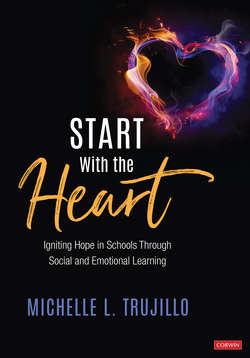Читать книгу Start With the Heart - Michelle L. Trujillo - Страница 20
На сайте Литреса книга снята с продажи.
When People Feel Respected They Are More Likely to Engage
ОглавлениеIn a similar light, respect—or the lack thereof—can have an impact on our ability to unify or understand each other’s perspectives. In my work as a school climate specialist, I spend a great deal of time coaching school leaders and interacting with staff and students. When it comes to respect (which tends to be a school improvement initiative for many schools), more often than not students can tell me that respect is a value of the school, but they have difficulty describing what it looks like or defining it because the definition or description of respect can differ depending on our familial culture and traditions, as well as our life experiences. Kids who grow up defensive, or associated with gangs, may see respect as fear, while people who experience family life with an emphasis on old-fashioned values may describe respect as having proper manners or admiration for another. Respect in some cultures requires that you look someone in the eye when speaking, while in other cultures young people show respect to their elders by casting their eyes downward. In a school culture, norms and expectations for respect may need to be identified, established, and reinforced. It is necessary to remedy any confusion around respect in our quest to connect with all stakeholders within our school community. It may be important to identify the need to code-switch by acknowledging the difference between what respect looks like at home and what it looks like at school.
In fact, an inspiring and passionate elementary teacher, Krystal Koontz, uses the analogy of a backpack to help her students think about this issue. She asks her students, “What character traits and behaviors do you need in your backpack at home to demonstrate respect. Now think about this: How does what you put in your backpack in regard to respectful traits and behaviors change for school?” In regard to respect, some of our students need two completely different backpacks.
I notice that when people feel respected they are more likely to engage, interact, listen, and speak up. They are prone to volunteer and are more willing to trust if an air of respect is present. Yet, in order to reach this ideal in a group of diverse people, it is important to agree on what respect looks like within the school community. Because we all come from different perspectives, everyone should have an opportunity to have input in developing a definition or guiding principles for respect. Through surveys, focus groups, and personal interviews, we can gather data in the form of thoughts, views, and perceptions. I have seen schools create exciting celebrations when they reveal the school’s new code of respect. And within this celebration is a group of people experiencing camaraderie, unity, and joy.
Keep in mind that it is not measurable objectives, an innovative curriculum, or required testing that leads to this camaraderie, unity, and joy (all of which are essential to a positive school climate). It is the result of people coming together to exchange ideas and engage each other in conversation. If we, as educators, expect to engage our students so that they are excited to learn, if we desire to build productive and collegial relationships with our peers, and if we seek to develop constructive conversations with parents and guardians, then a positive climate based on sincere human relationships and a willingness to understand the perspective of others must come before instruction, training, and assessment.
A concerted effort toward connection with colleagues, as well as a comprehensive program that emphasizes social, emotional, and academic development mindsets and competencies can create a positive school climate and a culture of thoughts and behaviors that contribute to success in school and in life. Throughout this book you will be asked to consider and implement strategies based on a combination of competencies established by the Collaborative for Academic, Social, and Emotional Learning, as well as perspectives and recommendations from the Aspen Institute’s National Commission on Social, Emotional, and Academic Development.
